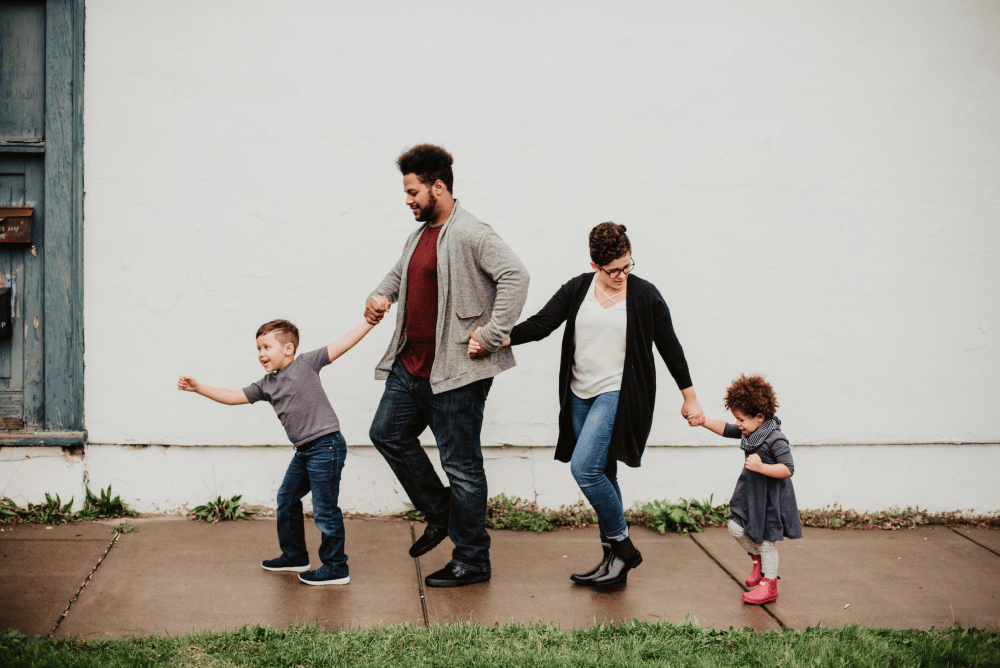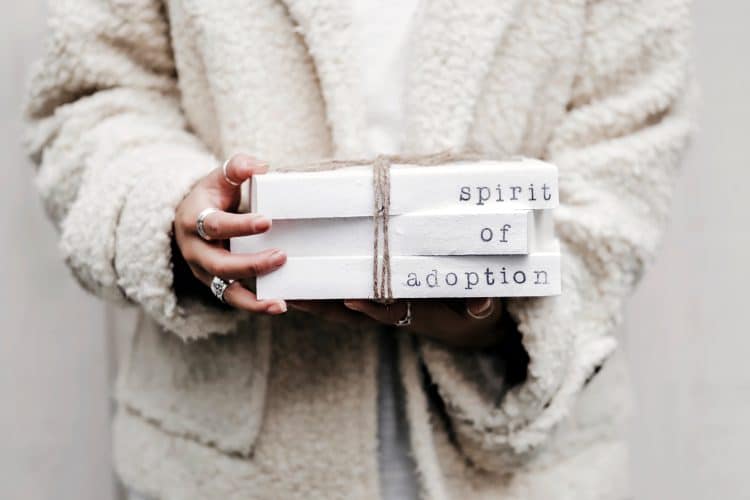How to Be a Secure Base for Your Loved One

Published on December 11, 2022 Updated on December 19, 2022
Many insecure attachers feel alone – even if they’re surrounded by people who love them. These feelings of isolation can be especially triggered at certain times of the year, such as the holiday season, family gatherings, interpersonal conflict, and even within loving relationships.
It’s comforting to know that we can help someone we care about feel more supported during situations such as these. It’s just a matter of learning how!
Acting as a secure base for a loved one during stressful times can help them feel less anxious in general, and also more secure in your presence – bolstering your relationship with them.
To help answer any questions you may have on how to become a secure base for your loved one, this article will cover what a secure base is and how to offer a secure base through sensitivity, interest, cooperation, responsivity, and acting as an equal to the other person.
What Is a Secure Base?

Mary Ainsworth, a developmental psychologist from the 20th century, first introduced the concept of a “secure base” in her research on infant attachment patterns. She described attachment as a “secure base from which to explore.”
Ainsworth believed infants must develop a secure dependence on their primary caregiver – through a safe, reliable relationship – before they can explore unfamiliar situations. For a caregiver to be a secure base, the child must be sure that their caregiver will:
- Greet them lovingly when they return (such as when they return after crawling to another area of the room)
- Comfort them when they’re upset
- Provide reassurance if they become scared
Forming a secure attachment with a caregiver appears to have many benefits throughout a person’s life. Secure attachment may help children and adolescents hit all their developmental milestones, understand and regulate their emotions, and form trusting, secure relationships. Moreover, people who experience early secure attachment may display a strong sense of self and high self-esteem.
Does Every Child Have a Secure Base?
Unfortunately, only some children experience a secure base in early life. Evidence suggests that around 60% of children have secure early relationships. Ainsworth (alongside many other attachment researchers) believed that primary caregivers must engage in certain parenting behaviors to provide a secure base.
Ainsworth identified four key caregiver behaviors that are necessary for forming a secure base with their child:
- Sensitivity to the child’s signals
- Cooperation with the child’s behaviors (to a point)
- Mental and physical availability
- Acceptance of their child’s needs
Without these behaviors, children may form one of three insecure attachment styles: anxious-ambivalent, anxious-avoidant, or fearful-avoidant.
It’s important to note that insecure attachment may develop for many reasons. And often, caregivers don’t neglect their childrens’ needs intentionally – they may be unable to do so for reasons such as mental health difficulties, lack of confidence, overwhelming feelings, or because they themselves have an insecure attachment style.
People who have never experienced a secure base may feel unsafe and on edge during times such as family gatherings, conflict, or expressions of intimacy – which may show in their behaviors. However, you can increase feelings of safety for your loved ones by offering a secure base for them. Evidence shows that people can earn attachment security when they receive emotional support from someone other than their primary caregiver – such as another family member or romantic partner.
If you would like to know your attachment style, the free quiz on our website can provide you with your report within minutes.
5 Tips for How to Be a Secure Base For Your Loved One
If you’re asking yourself, “what do I have to do to become a secure base for someone I care about?” the answer lies in Mary Ainsworth’s four key primary caregiver behaviors. Although you may not be this someone’s primary caregiver, research shows that we can apply Ainsworth’s insights about the caregiver-child relationship to adult relationships. In both relationships, we rely on another person’s sensitivity, availability, cooperation, and responsiveness to feel safe.
The research also identifies one extra secure base behavior in adult relationships: encouraging equality.
The following are five evidence based tips on how to become a secure base:

#1. Display Sensitivity
Mary Ainsworth believed that primary caregiver sensitivity depended on an ability to:
- Notice a child’s signals
- Interpret these correctly
- Respond to the child’s signals promptly and appropriately
However, sensitivity looks a little different in adult relationships. It involves tuning into your loved one’s emotional state and needs, noticing when something is bothering them, and listening when they express concern. There are three key components to sensitivity in adult relationships:
- A willingness to help the other person
- Making an effort through your behavior, tone of voice, and words
- Cooperating with the other person to resolve the issue rather than using control or demands.
Displaying sensitivity could be as simple as asking your loved one, “what’s wrong?” or “how can I help?”
If they don’t want to open up, that’s OK. While it’s easy to feel discouraged if they are reluctant to share, it’s important to recognize that they may need time. In this situation, you could say, “I’m here if you need me.”This offer of support may take you one step closer to becoming a secure base for the person you care about.
#2. Show Your Interest
Another key secure base behavior is being available to the other person’s needs. Availability is all about showing your openness to and interest in your loved one. You can communicate that you’re available by using active listening skills such as eye contact, turning your body to face them, and not interrupting when they speak to you.
Showing interest could also involve asking questions like, “how has work been?” or “how is everything going?” If your loved one opens up about a difficult experience, try your best not to judge, criticize, or jump to conclusions. Instead, be curious and ask questions for clarification.
Showing interest in the person you care about and not responding with judgment or preconceptions will allow you to form a genuine connection with them. It will also communicate, “I’m safe to be around.”
#3. Be Cooperative
In Ainsworth’s terms, cooperation refers to how the primary caregiver collaborates with their child’s natural desire to explore. The opposite of cooperation is interference – for example, how often does the caregiver feel like they have to pick up the child to prevent them from hurting themself?
Cooperation in adult relationships is about allowing your loved one to be who they are, without trying to change, control, or direct them in a specific way.
Staying cooperative can be challenging, especially if you don’t agree with the other person’s thoughts or behaviors. In these instances, cooperation could look like changing the topic of conversation or playing down the situation in a way that will not cause further upset.
For you to be a secure base, your loved one needs to be able to see that you accept them for who they are and do not want to change them.
#4. Show Responsiveness
Responsiveness in adult relationships involves conveying understanding, care, and warmth. Evidence shows that people who see their romantic partners as more responsive feel more secure in their relationship, with fewer feelings of attachment avoidance or anxiety. If your loved one is a family member, the same principle likely stands – however, the research in this specific area is limited.
One way to show responsiveness is to validate a loved one’s feelings when they talk about an emotional experience. For example, “wow, that sounds really frightening,” or “gosh, I would have been angry, too.” Open-ended questions also lets them see that you’re interested in their feelings without needing to provide the answer within the question. For example, asking “how did that experience make you feel?” allows them to explore their answer.
The purpose of responsiveness is to make the other person feel valued, listened to, understood, and comfortable in your presence.

#5. Be Their Equal
Secure adult attachment relationships may not form if one person seems more “powerful” than the other. Within the attachment research, one proposed way to act as another person’s equal is to both offer and seek emotional support. You could do this by asking your loved one’s opinion on something you need help with and offering them support in return.
The best way to balance out a power dynamic might be by being open and honest, respecting your loved one’s boundaries, and supporting their individuality and interests.
Another fundamental component of achieving equality with the other person is to show that you trust them. However, demonstrating trust may be easier said than done, especially if the other person has given you reasons to not trust them in the past. Trust takes time, but using these secure base behaviors may communicate that you are trustworthy, making building a trusting relationship easier.
Does Acting as a Secure Base Guarantee Better Relationships?
Being sensitive, cooperative, and responsive, showing your interest, and acting as a loved one’s equal, doesn’t necessarily guarantee that they will respond in a warm and welcoming way. If your attempts at being a secure base for your loved one don’t work, try not to be hard on yourself. It isn’t anyone’s fault.
Adult attachment relationships need to be reciprocal – both sides must be ready to form a secure attachment. Some people may respond negatively to your attempts to offer support. It’s important not to take this personally and understand that this is likely a result of their attachment style.
For example, situations where you offer or seek emotional support may trigger an avoidant attacher’s attachment style, as they might have learned to rely only on themselves. This intimacy-seeking behavior could result in them pulling away and distancing themself from you.
Try to remember that people can still form secure attachments even when their early relationships were insecure, but it may not happen overnight. But by acting as a secure base, you begin to build a bridge of communication, trust, and emotional closeness with your loved one.

Final Note on Becoming a Secure Base
There are many situations that may involve you wanting to act as a secure base for someone you care about – the holiday season, family gatherings, interpersonal conflict, and even just within a healthy relationship dynamic.
But it’s normal to feel a little apprehensive about doing so, especially if your relationship with your loved one has been rocky in the past. The important thing to remember, is that you should never sacrifice your core needs in order to become someone elses’ secure base.
Having said as much, the key components in acting as a secure base involve sensitivity, cooperativeness, responsiveness, emotional availabilty, and equality. Once each of these factors is conquered in a reciprocal manner, there is a very good chance that you can successfully act as a secure base for your loved one. And perhaps even help them achieve earned security in the process.
References
Ainsworth, M.D.S., Bell, S.M., & Stayton, D. J. (1974). Infant-Mother Attachment and Social Development: “Socialisation” as a Product of Reciprocal Responsiveness to Signals. In: Richards, P.M., Ed., The Integration of a Child into a Social World, Cambridge University Press, 99-135.
Canevello, A., & Crocker, J. (2010). Creating good relationships: Responsiveness, relationship quality, and interpersonal goals. Journal of Personality and Social Psychology, 99(1), 78–106.
Crowell, J. A., Treboux, D., Gao, Y., Fyffe, C., Pan, H., & Waters, E. (2002). Assessing secure base behavior in adulthood: Development of a measure, links to adult attachment representations and relations to couples’ communication and reports of relationships. Developmental Psychology, 38(5), 679–693.
Huber, B. R. (2014, March 27). Four in 10 infants lack strong parental attachments. Princeton University.
Li, P. (2022, September 20). What is a Secure Base and How Can Parents Become One. Parenting for Brain.
Mesman, J., & Emmen, R. A. (2013). Mary Ainsworth’s legacy: a systematic review of observational instruments measuring parental sensitivity. Attachment & human development, 15(5-6), 485–506.
Peterson, C., & Park, N. (2007). Attachment Security and Its Benefits in Context. Psychological Inquiry, 18(3), 172–176.
Polkovnikova-Wamoto, A., Mathai, M., Stoep, A. V., & Kumar, M. (2016). ‘Haven of safety’ and ‘secure base’: a qualitative inquiry into factors affecting child attachment security in Nairobi, Kenya. Vulnerable children and youth studies, 11(4), 286–296.
Rice, T. M., Kumashiro, M., & Arriaga, X. B. (2020). Mind the Gap: Perceived Partner Responsiveness as a Bridge between General and Partner-Specific Attachment Security. International Journal of Environmental Research and Public Health, 17(19), 7178.
Waters, E., & Cummings, E. M. (2000). A Secure Base from Which to Explore Close Relationships. Child Development, 71(1), 164–172.











 Get mental health tips straight to your inbox
Get mental health tips straight to your inbox








